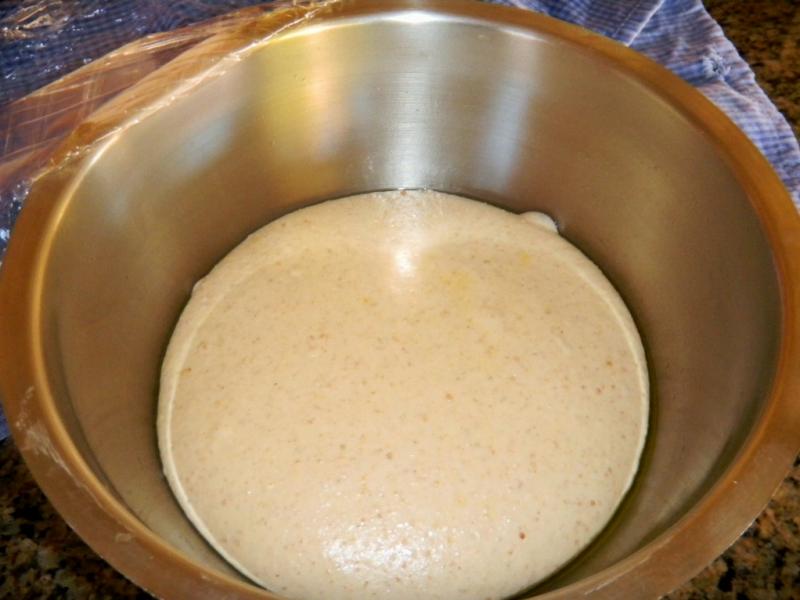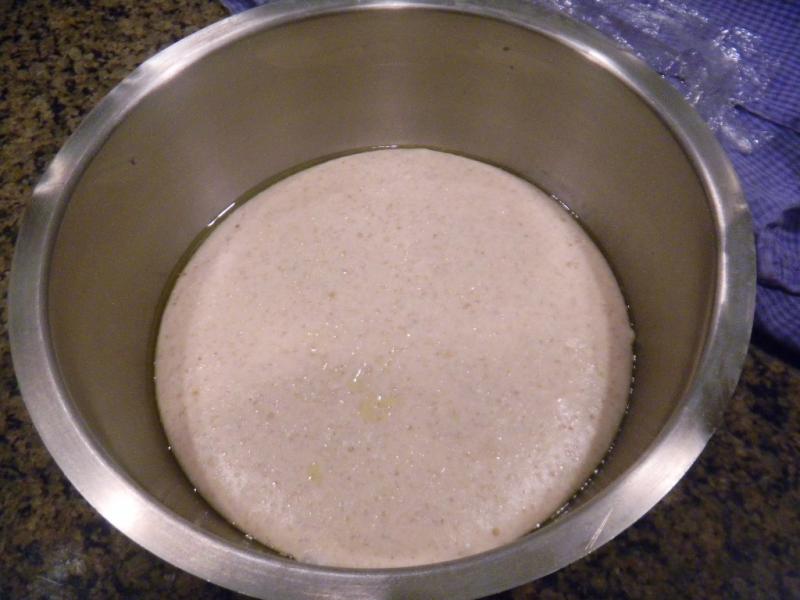Go to the bottom of the post to see the extension after the ************************************************
It sounds like an interesting experiment to do for SD starter. I can use up to 20g of stater making 200 g of 80% hydration levain over 12 hours in the winter time and kitchen temperatures around 60-65 F. That 200 g levain would normally go into 800 g of flour and 600 g of water and then developed over a couple of hours. In the winter time it could possibly ferment and proof 6-8 hours on the counter before needing to go in the oven. With yeast water we have gone 12 hours.
I suppose that if one would use 1 g of SD starter and mix it with the entire 900 g of flour and 675 g of water and 2% salt (no levain build) it would take a while for it to be ready to bake, How long we will have to find out - unless someone has already done this test. I'm not sure, perhaps someone here knows this too, but yeast only lives about 6 days or so before croaking.

No collapse after 24 hours,
So my apprentice took 1 g of starter and tried it out on 100 g of flour and 75 g of water, 2 g of salt to see what happens. She started at 9 AM, Oct 26, 68.2 F kitchen temp and level marked with a rubber band. Lets see how long it takes to double and make a couple knotted rolls out of it :-) Here is a pix exactly 24 hours later the levain had nearly tripled but had not collapsed. Amazing for 1 g of starter and 100 g of flour.


9 AM - Oct 26 9 AM - Oct 27.
Here is a picture of the top of the levain too. I've decided to eventually make some bagels out of some of this and a lower hydration will slow this train down some too. Also want to get some whole grains in the mix too. So we will divide the dough in half and add another 86 g of flour, 44 g of water to get the hydration down to 60% from 75% and a little less than 2 g of salt to each half. One half got 86 g of whole grain flours (50%rye, 32% WW and 18% spelt). The other half got 86 g of AP and 44 g of water and less than 2 g of salt - to keep the control of white flour intact.

10 AM - Oct 27 after the 24 hour mark split into two levains one has some Whole Grains now and one is still AP only.
This should perhaps get us from 24 to 48 hours on the counter. The temperature fell to 70 F this morning from a high yesterday of 81 F in the afternoon fall kitchen.
The whole grain levain on the left doubled again at the 32 hour mark and was put in the fridge for a 24 hour retard and the white flour levain doubled at the 36 hour mark and also went into the fridge for a 24 hour retard. Looks like 36 hours is as far as we would want to go before refrigerating or using. Retarding the starter should make the sour really come out.


************************************************************************************************************************
Now that we know it takes 24 hours for our 1g of our Desem /Rye SD starter tpo double 100g of flour at 75% hydration, we are going to extend the experiment to see if we can do a 36 hour bread on the counter top.
We mixed 7 g of 67% hydro starter with 50 g of water to thin it out and liquefy it. We then added 22 g each of home ground whole: spelt, rye and wheat along with 2 g each of white and red malts made from the same flours and mixed it up well. We then added another 455 g of water and mixed again before adding 315 g each of bread and AP flour and mixing again. This gave us a 72% hydration dough that has 10% whole grains and 1% SD starter.
We let the dough autolyse for 30 minutes before adding 11 g of salt and starting 15 minutes of French Slap and folds. We expect to let the dough ferment for 24 hours before letting it rise again for 12 hours before baking. The gluten was well developed after the slap and folds and the dough ball looked like this:

Michael Wilson has had a positive effect on my dough balls! Can't wait to try out his panettone !


11 AM 11/04/2012 7 PM 11/04/2012 +- 10% increase in volume
11 PM 11/04/2012 +-20% increase in volume 3 AM 11/05/2012 +- 30 %increase in volume


7 AM + 100% increase in volume

It only took 20 hours to double in volume starting with 1% starter to flour ratio. Time to split it up and and proof a loaf of fig, pistachio, sunflower and pumpkin seed bread and one plain old SFSF - and see how long they take to double. The round is SFSD.

The reality was that the dough had doubled again in 4 hours and was ready for Big Old Betsy to bake up so we did. At our hot kitchen temp of nearly 79 F Doc.Dough spreadsheet said we would ne ready to bake in less time but we might have over proofed it a little too.

Here they are proofed. 24 hours on the counter from mixing the dough to baking it off worked for this starter, flour and hydration combination.
I will do another post to cover the bread itself which baked up very well.